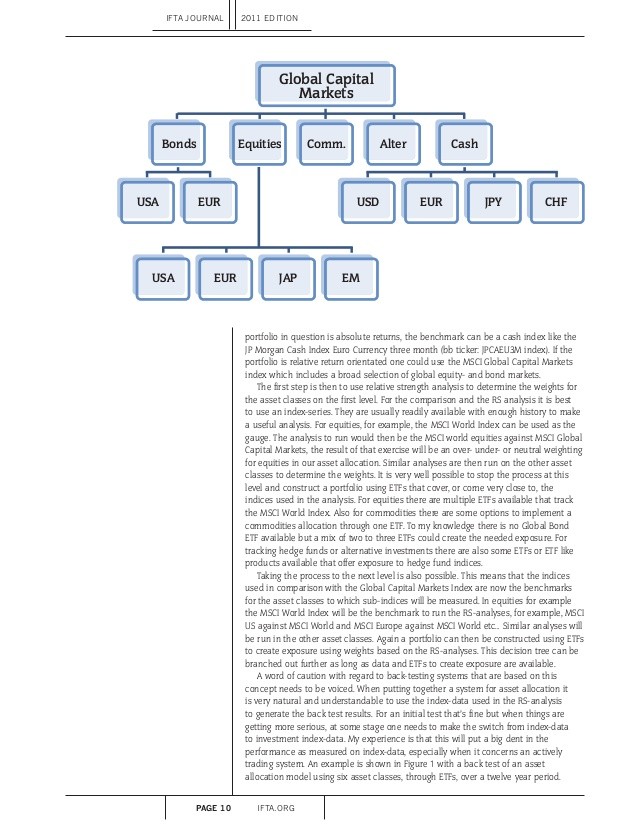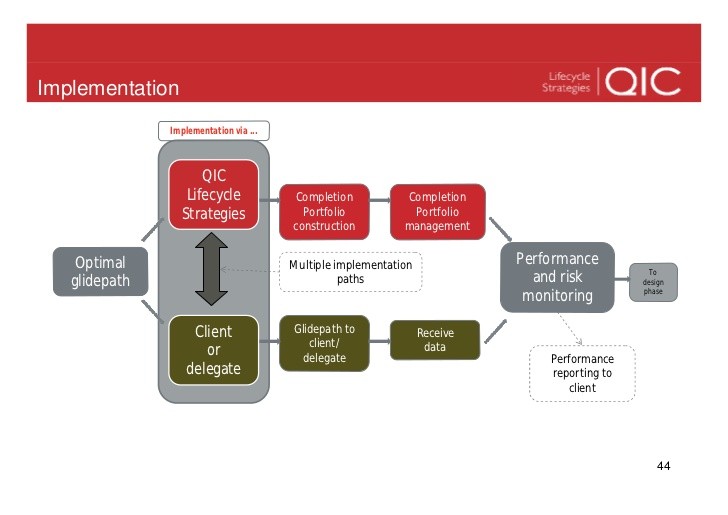Journal of Asset Management Portfolio performance ambiguity and benchmark inefficiency revisited
Post on: 18 Апрель, 2015 No Comment

Journal of Asset Management (2008) 9, 321–332. doi:10.1057/jam.2008.33
Portfolio performance ambiguity and benchmark inefficiency revisited
Lawrence Kryzanowski 1 and Abdul Rahman 2
Correspondence: Lawrence Kryzanowski, Department of Finance, John Molson School of Business, Concordia University, Montreal, P.Q. Canada H3G 1M8. Tel: +1 514 848 2424, ext. 2782; Fax: +1 514 848 4500; E-mail: lawrence.kryzanowski@concordia.ca
1 is the Concordia University Research Chair in Finance. His PhD is from the University of British Columbia. He has acted as a consultant and expert witness in security markets and investment management, and has published extensively on asset pricing, portfolio management and performance evaluation.
2 is full professor, Telfer School of Management, University of Ottawa. He obtained a doctorate degree in Financial Economics from Concordia University. His current research interests include institutional asset management, subjective option theory and credit-risk management.
Received 18 May 2008; Revised 18 May 2008.
Abstract
We prove that an active manager can almost always obtain a positive alpha without having any market-timing or stock-picking ability by exploiting benchmark inefficiency. This suggests that rank ordering portfolio performance against a peer group following the same benchmark is preferable. We show that the benchmark beta and inefficiency value pairs that minimise the optimal portfolio beta follow an approximate, positively sloped straight line. We demonstrate that, consistent with observed portfolio betas, the minimum optimal portfolio beta is less than one for reasonable values of the benchmark beta (less than 1.5) and benchmark inefficiencies (less than 25 per cent). Furthermore, we show that the optimal portfolio beta after reaching its minimum and the information ratio increase at increasing and decreasing rates, respectively, with increases in benchmark inefficiency.
Keywords:
benchmark inefficiency, portfolio performance, information ratio
Introduction
A long-standing and unresolved issue in portfolio performance measurement is whether benchmark outperformance is unambiguous evidence of skill or just plain luck. Since the compelling deductive argument by Sharpe (1991) that concludes that active management in the aggregate yields no incremental value, several studies have endeavoured to identify unambiguous investment attributes that discriminate between individual managers with skill and those who are deficient in that regard. Many experts contend that a persuasive attribute associated with investment skill is a statistically significant and unbiased degree of persistence in performance. 1 For mutual funds, the evidence on performance persistence is mixed. Several studies in the early 1990s (eg Grinblatt and Titman, 1992 ; Hendricks et al.. 1993 ; Goetzmann and Ibbotson, 1994 ; Elton et al.. 1996 ; Gruber, 1996 ) suggest that some mutual funds do exhibit persistent superior performance. More recent studies (eg Brown and Goetzmann, 1995 ; Malkiel, 1995 ; Carhart, 1997 ; Wermers, 1999 ) cast some doubt on this inference since they attribute the earlier findings to survivorship bias or to naïve momentum. Interestingly, these more recent findings return us to the conclusion of very early studies by Sharpe (1968) and Jensen (1968). who find that superior performance does not persist over time.
From a theoretical perspective, portfolio persistence should not occur ex ante. Suppose that investors have less information about the true investment skill of the money manager. Investors are then likely to believe that they have underestimated the true skill of the manager who has currently obtained above-average performance. In turn, this is likely to lead to net inflows of funds. As shown by Berk and Green (2004). the net inflows will compete away the excess historical returns arising from the manager’s skill, thereby leading to zero benchmark outperformance. 2 This could explain the empirical result by Chan et al. (2002) who, in examining the distribution of individual mutual fund styles, find a ‘bunching at the centre’ where individual mutual funds appear reluctant to deviate substantially from the market portfolio. Based on the logic of Berk and Green (2004). a concentration of performance around the benchmark return is due not to a lack of skill, but to the outcome of rational profit maximising investors within competitive capital markets as investors try to identify managers with investment skill.
This lack of clear and convincing evidence of persistence in performance is also present in pension fund management. Blake et al. (2002) show that the performance of UK pension funds is close to the benchmark, a finding that is similar to that by Thomas and Tonks (2001). who find that most UK segregated pension fund managers follow similar investment strategies, thus making the identification of superior performance difficult. Blake et al. (1999) find evidence of persistence in fund returns over a one-year horizon but attribute this to an inverse relationship between fund size and fund performance. Brown et al. (1997) present limited evidence of persistence in performance for UK pension funds, while Tonks (2005) documents ‘strong evidence of persistence’. Sta ń ko (2003) finds that estimated alphas for Polish pension funds are concentrated around the median fund manager. While indicating a lack of persistence in performance, these empirical findings also reveal a ‘bunching of performance’ that is likely evidence of herding. Scharfstein and Stein (1990) and Roll (1992) argue that managers follow the herd to preserve reputation. Herding by pension fund managers is examined in Lakonishok et al. (1992) and also for other institutions in Jones et al. (1999) and Badrinath and Wahal (2000) .
To add to the empirical complication, there is evidence of significant noise in performance statistics and hence considerable time is required to establish the statistical existence of skill. Urwin (1998) observes a factor-of-five hypothesis where the noise-to-skill ratio is five; that is, the noise in one-year performance data is five times the magnitude of the skill generating that performance. Further, using an intertemporal continuous model, Ambarish and Seigel (1997) suggest that an astounding 175 years of data are required to make a claim of 84 per cent confidence that the manager possesses investment skill as manifested in 300 basis points of outperformance.
Whether or not managers possess skill (apart from being able to find evidence of such skill), it is important to underscore that managers have a strong incentive not to underperform the selected benchmark. If they do underperform the benchmark, managers may suffer reputation risk and eventually lose their mandate, resulting in the loss of fee income that is at least equal to the present value of future mandate income much beyond the normal contractual period of three years. While we recognise that fees are typically based on the end-of-period portfolio value and so are not strictly performance fees, it is still in the interest of the manager to attempt to outperform the benchmark. First, as stated above, there is less likelihood of losing the mandate and hence the present value of future fees if they outperform the benchmark. Secondly, by beating the benchmark, the fees earned rise, since payment is a fraction of the assets under management. Thirdly, the probability of winning other mandates is likely to increase.

The ambiguity introduced into performance measurement by using an inefficient benchmark has also been a continuing concern. Roll (1978. 1980. 1981 ) demonstrates that measured performance is better (worse) than actual performance when the portfolio’s expected return is larger (smaller) than the expected return of the market index based on an ex ante CAPM benchmark. Various authors empirically examine the inferential sturdiness of various performance metrics and benchmarks. For example, Grinblatt and Titman (1994) find similar inferences for different performance metrics holding the benchmark constant, but different performance inferences for different benchmarks holding the performance metric constant. Similarly, Lehmann and Modest (1987). Kryzanowski et al. (1998). among others, examine the so-called ‘portfolio performance benchmark invariancy’ problem and find that performance inferences are sensitive to the construction of the mimicking portfolio benchmark.
Thus, we revisit the role of benchmark inefficiency in the skill-versus-luck debate in this paper. Within an intertemporal continuous version of the model proposed by Ingersoll (2006). we prove that the active manager can almost surely obtain a positive information ratio without having any market-timing or stock-picking ability. This is interesting in the sense that even statistically significant evidence of stock-picking or market-timing skill as represented by sufficiently high information ratios over a large enough time period may only be the result of the inherent inefficiency of the selected benchmark.
The assumption that the money manager possesses no stock-picking or market-timing ability is also made by Karceski (2002). who formulated a model that explains the observed ‘returns chasing’ behaviour of investors who place more money into funds that recently outperformed the market index or a peer group. In this case, the optimal strategy for the manager is to tilt his / her portfolio towards higher beta stocks, since it is better to be a top manager in a bull market when investors place more money into funds than in bear markets when funds lose money. Consistent with the predictions of his model, Karceski (2002) finds, using Morningstar data on mutual fund holdings, that the aggregate equity mutual fund overweights high beta stocks relative to the S&P 500. Further the collective stock portfolio held by all equity funds has a value-weighted beta of 1.05 that falls to 0.95 when cash balances in these funds are included.
In our model, the manager, who has no market-timing or stock-picking skills, exploits the inefficiency in the selected benchmark to obtain an information ratio that is bounded above by a value that is proportional to the traditional Sharpe ratio of the market index. This is a clear indication that positive information ratios are not necessarily an indicator of skill. This does not occur because it is difficult to determine whether the realised value is statistically significant and hence not attributable to luck. Rather, positive information ratios can arise from exploiting benchmark inefficiency. This suggests that rank ordering portfolio performance against a peer group (ie following the same benchmark) is likely to be less distorting. It also supports the remark made by Blake and Timmermann (1998) that fund managers know that it is their relative performance against their peers, rather than their absolute performance, that determines their long-run survival in the industry.
To obtain our results, we impose a constraint on total portfolio risk as recommended by Jorion (2003) in his award-winning paper. Jorion (2003) shows that tracking-error constrained portfolios are described by an ellipse in the traditional mean–variance plane. Because this ellipse has a flat shape, adding a constraint on the total portfolio risk can substantially improve the performance of the active portfolio. As recommended by Jorion (2003). ‘plan sponsors should concentrate on controlling total portfolio risk’. A related study by Kritzman and Rich (1998) models a manager’s incentive fee as a Margrabe-type option with constraints on both the tracking error and total portfolio risk. In our model, this constraint on total portfolio risk permits a unique solution of the optimal portfolio beta that is obtained from a quadratic equation for the portfolio beta. The positive root allows for feasible implementation in that its value depends only on the risk components of the market portfolio and the benchmark index.
The remainder of this paper is organised as follows. The next section presents an adaptation of Ingersoll’s (2006) continuous time model that is solved for the optimal portfolio beta. The resulting covariance between the portfolio and the selected index is then derived. In the subsequent section, comparative statics are derived and implementation issues are discussed. The last section is a conclusion.
Exploiting benchmark inefficiency
Let ( Ω. , P ) be a probability space where is a filtered σ -algebra on Ω and P is a physical probability measure where P (A ) ε [ 0,   1 ] for all subsets A in . Further, assume that the investment manager’s portfolio S t . the declared benchmark index I t and the market portfolio M t are adapted to the filtration and evolve according to the jointly correlated geometric Brownian motion (GBM) processes:














